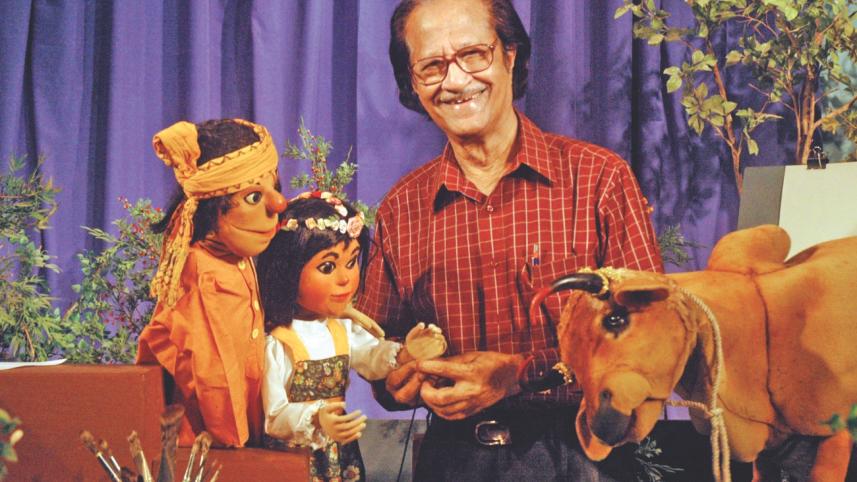Mustafa Manwar recalls the Liberation War

The scenes from the refugee camps in West Bengal in 1971 are etched forever in Mustafa Manwar's mind: grim, distressed faces and a deathly silence which enveloped everyone, including the children. “They were getting basic necessities such as food and clothes but laughter, which is crucial for human beings, was missing. Even the children did not play together. The trauma was tremendous because of the inhumanity of the Pakistani army. So I thought I would have puppet plays to boost the refugees' morale and bring back laughter in their lives,” says Manwar, puppeteer, artist, director and producer of TV programmes and author of screenplays.
And he did do that through his puppet plays, such as Agachha, Rakhkhas and A brave farmer. The play with maximum impact was Agachha. The storyline: Drawing a parallel between unwanted weeds and the Pakistani oppressors, the play shows how the farmer pulls out the weeds that ruin his crop and throws them away just like the Pakistani rulers need to be weeded out before they destroy the ethos of the country.
The greatest accolade for Manwar was the audience's spontaneous laughter in the camps, particularly in Kalyanpur. Young and old alike joined in mirth fuelled by the satire. Manwar, as he admits, was moved to tears at the response. “I was so emotional because I saw their laughter had returned. I realised that it was almost as important to laugh as to have food,” says the versatile artist. One old man in the refugee camp said it was the first time that he had laughed after a month.
Another feather in his cap was when Lear Levin, an American documentary filmmaker, visited the country and made a film of these puppets. Later, Tareque Masud added many shots to those taken by the foreigner and called his film Muktir Gaan.
Coming back to the present, Manwar says puppetry is a very good medium for satire. Though Bangladeshi politicians are not accustomed to satire, he says he uses it subtly to lampoon them. Now he is busy with reviving folk stories and great writers of children's tales through puppetry. He has also worked on Hans Christian Andersen's The Nightingale and The Ugly Duckling.
Meanwhile, Manwar is upbeat about his puppetry medium. As he says, “Puppetry is a great medium to learn aesthetics and painting. All art forms can be combined in puppetry -- painting, voice and oratory, for example. It is a very important medium for children.” And his delighted young and old fans would tend to agree.



 For all latest news, follow The Daily Star's Google News channel.
For all latest news, follow The Daily Star's Google News channel.
Comments